This post may contains affiliate links. Read our full disclosure here.
Minimalist living isn’t about having an empty, sterile space – it’s about creating room for what truly matters. The minimalist aesthetic at home allows us to focus on intentionality and purpose, removing distractions and bringing a sense of calm into our everyday environments. When I first started embracing minimalism in my apartment years ago, I noticed not just how much cleaner my space felt, but how much clearer my mind became. Creating a minimalist aesthetic at home doesn’t mean tossing everything you love – it’s about curating spaces that reflect what you value most.
The beauty of the minimalist aesthetic at home lies in its accessibility – anyone can adopt these principles regardless of budget or home size. Whether you’re in a cramped apartment or a spacious house, these ten approaches will help you create spaces that feel both peaceful and purposeful. Let’s explore simple yet transformative ways to bring minimalist beauty into your living spaces without sacrificing the warmth that makes a house feel like home.
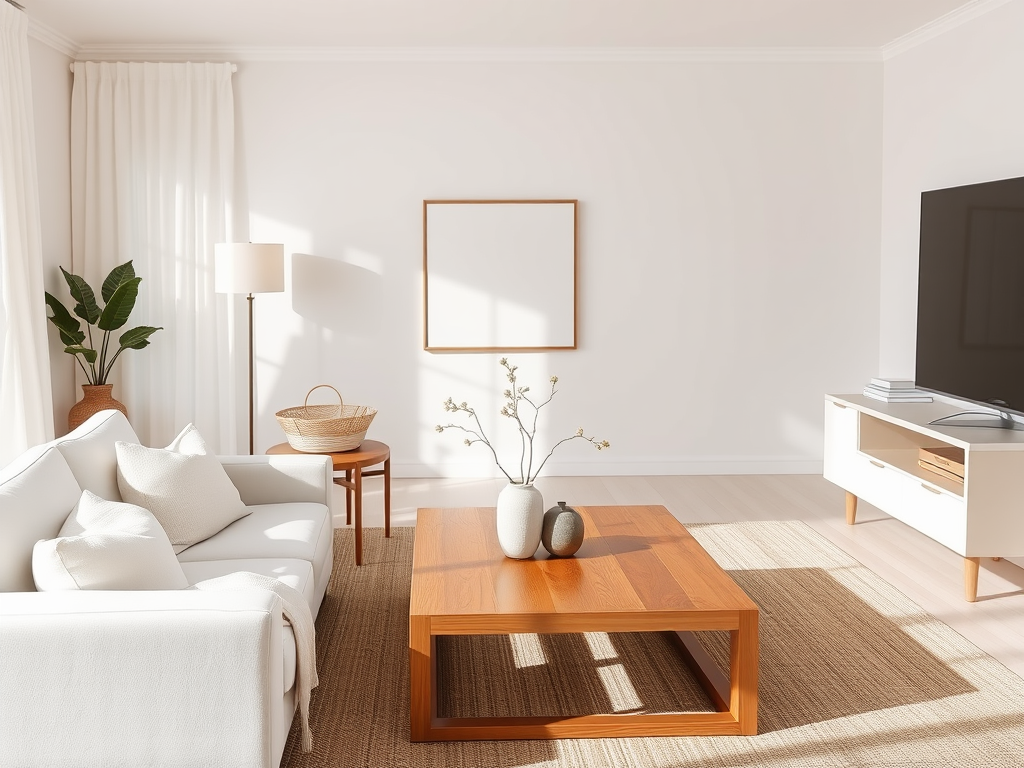
Embrace the Power of a Neutral Color Palette
A neutral color palette forms the cornerstone of the minimalist aesthetic at home. Whites, creams, beiges, and soft grays create a canvas that feels both expansive and peaceful. These tones reflect light beautifully, making even small spaces feel more open and airy. I transformed my living room simply by repainting the formerly bold burgundy walls with a warm white, and the difference was stunning – like the room could suddenly breathe.
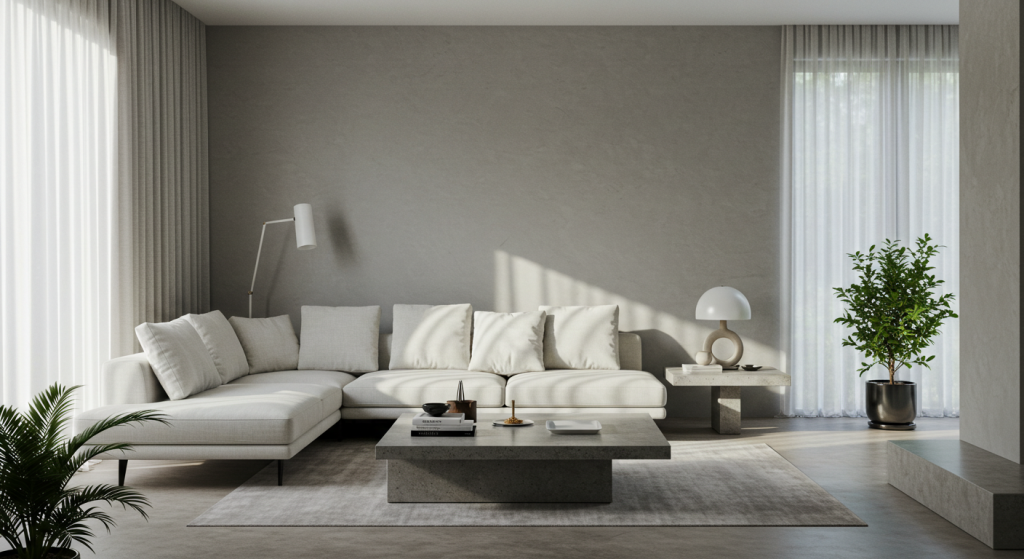
The psychology behind neutral colors is fascinating – they actually reduce visual “noise” and allow our minds to relax. According to color psychology experts, neutral tones promote feelings of calm and stability, which perfectly aligns with minimalist principles. The best part? With a neutral background, you can easily introduce seasonal accent pieces without overwhelming your space.
Try limiting your palette to three main neutral shades, then add one or two accent colors that you can rotate seasonally. This controlled approach keeps spaces feeling cohesive and thoughtfully designed rather than thrown together. For those worried about neutrals feeling boring, remember that texture will become your best friend (more on that later).
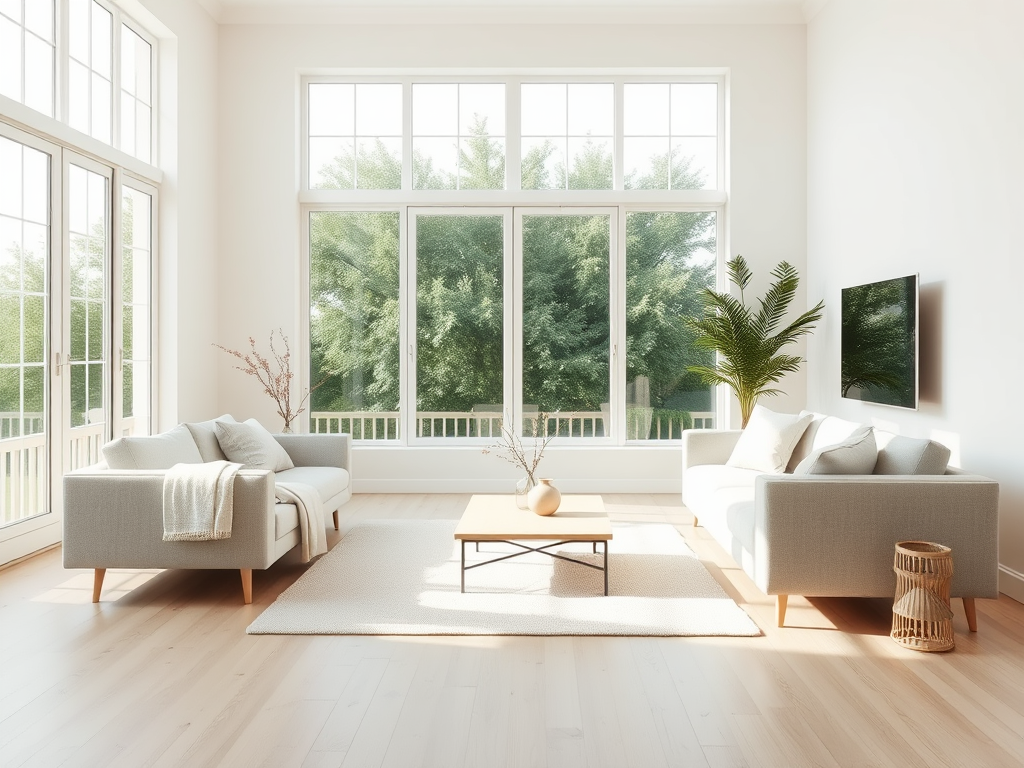
Choose Quality Furniture with Intentionality
The “less is more” philosophy applies perfectly to furniture when creating a minimalist aesthetic at home. Instead of filling your space with numerous cheap pieces that will fall apart in a year, focus on investing in fewer, higher-quality items that will last decades. My solid oak dining table cost more upfront but has outlasted three cheaper tables my friends purchased in the same timeframe – proving sometimes spending more actually saves money.
Look for clean lines and multi-functional pieces that serve more than one purpose. A storage ottoman can work as seating, a footrest, and hidden storage. A well-designed sofa with a timeless silhouette becomes the anchor for your living space. When shopping for furniture, ask yourself: “Will I still love this design in ten years?” If the answer is no, keep looking.
The key characteristics of minimalist furniture include simplicity, functionality, and quality materials. Avoid ornate details, excessive curves, or anything that feels visually “busy.” Remember that in minimalism, each piece needs to earn its place in your home through both beauty and function. Minimalist home decor starts with furniture that doesn’t demand attention but quietly supports your daily life.
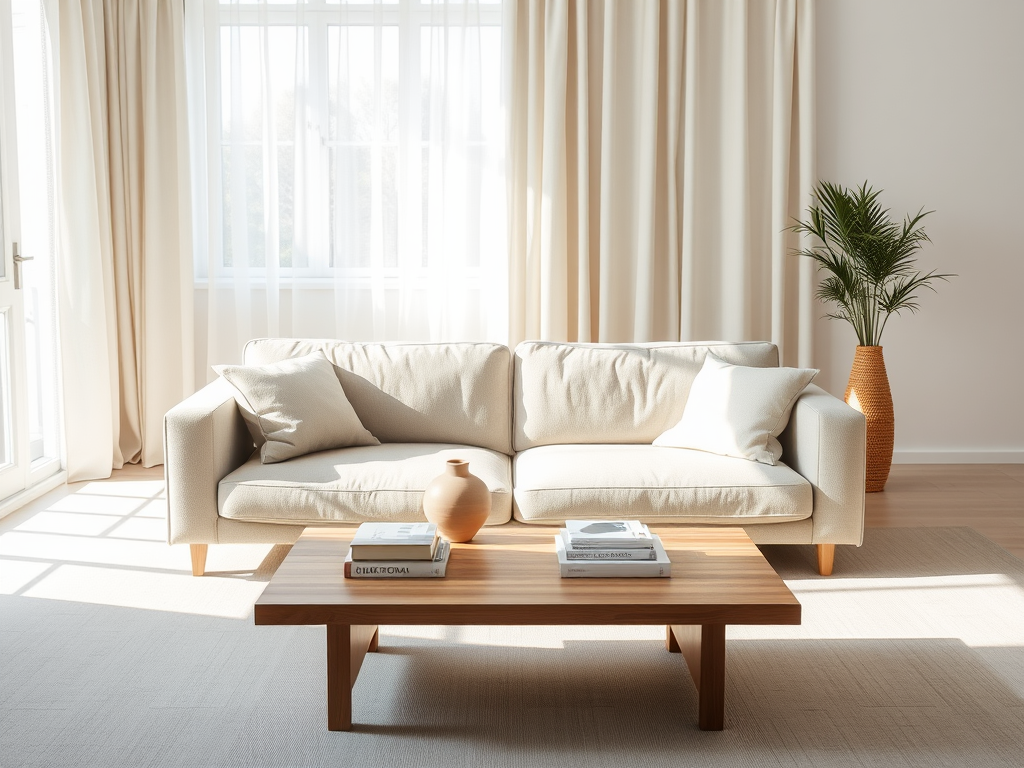
Make Natural Light a Priority in Your Minimalist Home
Natural light is perhaps the most valuable (and free!) design element in creating a beautiful minimalist space. It opens up rooms, highlights textures, and connects us to the outside world. When I moved into my current home, I immediately removed the heavy drapes from the previous owners and replaced them with simple linen sheers – the difference was like night and day, literally!
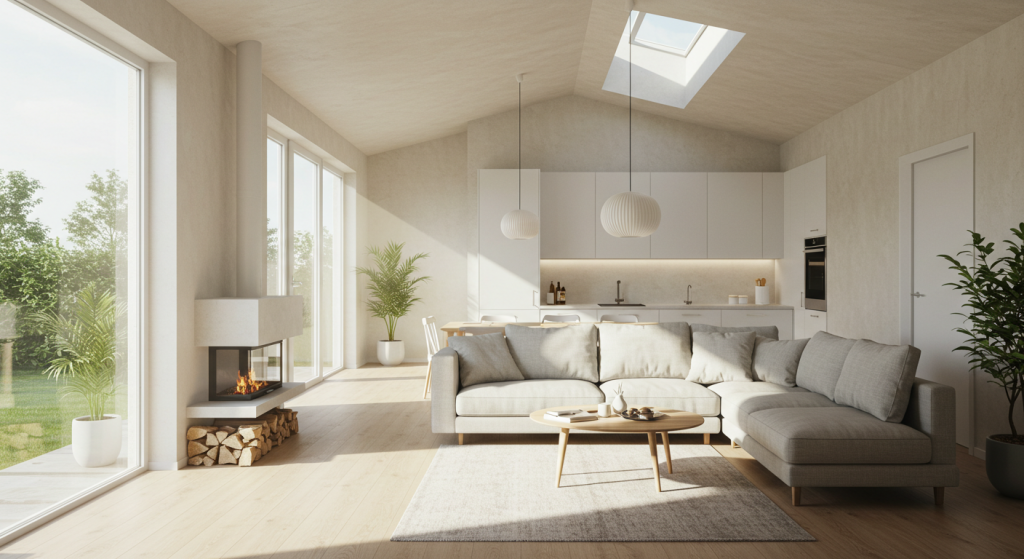
To maximize natural light, start by assessing your window treatments. Heavy, dark curtains block precious sunlight, while lightweight options filter light beautifully. Consider sheer curtains, simple blinds, or even leaving windows completely untreated if privacy isn’t a concern. Position important furniture to take advantage of natural light sources – a reading chair near a window or a desk where daylight will fall.
Window placement affects interior light patterns significantly, so understanding your home’s natural lighting rhythm can help you design more intentionally. In rooms with limited natural light, strategic mirror placement can bounce what light you do have further into the space. The relationship between natural versus artificial light creates balance in minimalist homes – during evening hours, opt for warm, diffused lighting rather than harsh overhead fixtures.
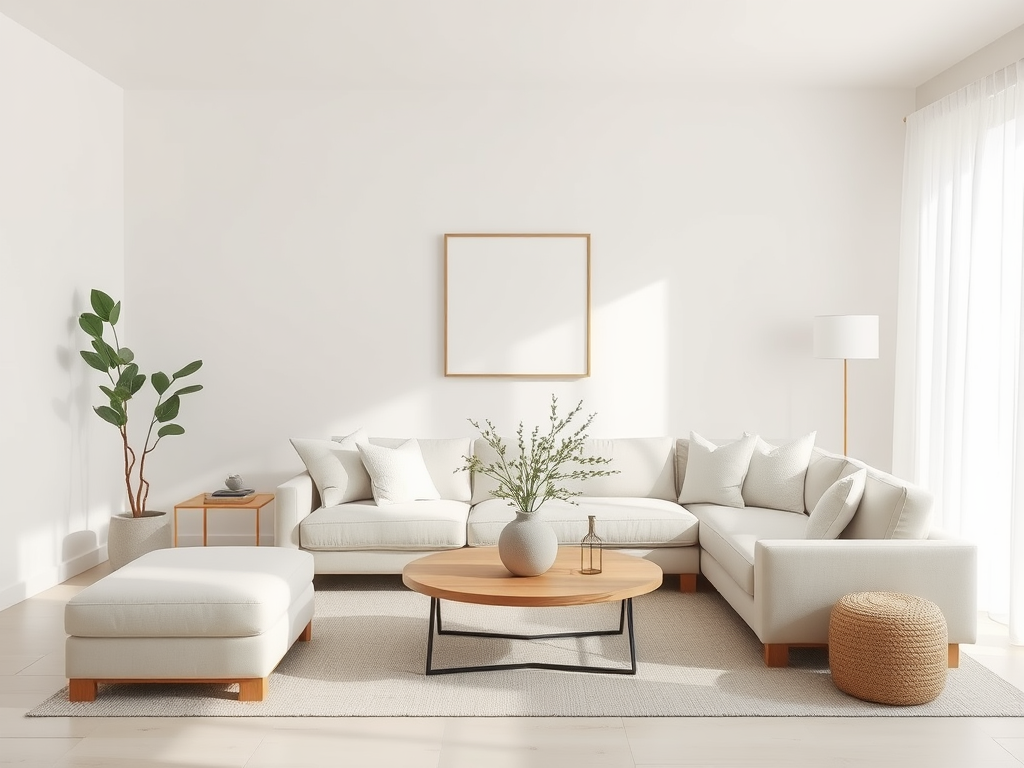
Learn to Appreciate Negative Space
One of the hardest minimalist principles to embrace is the value of empty space – many of us have been conditioned to fill every blank wall and surface. However, negative space (the unoccupied areas in your home) is actually a design element itself in the minimalist aesthetic at home. These visual “pauses” give your eyes and mind places to rest, creating a sense of calm that cluttered spaces simply cannot achieve.
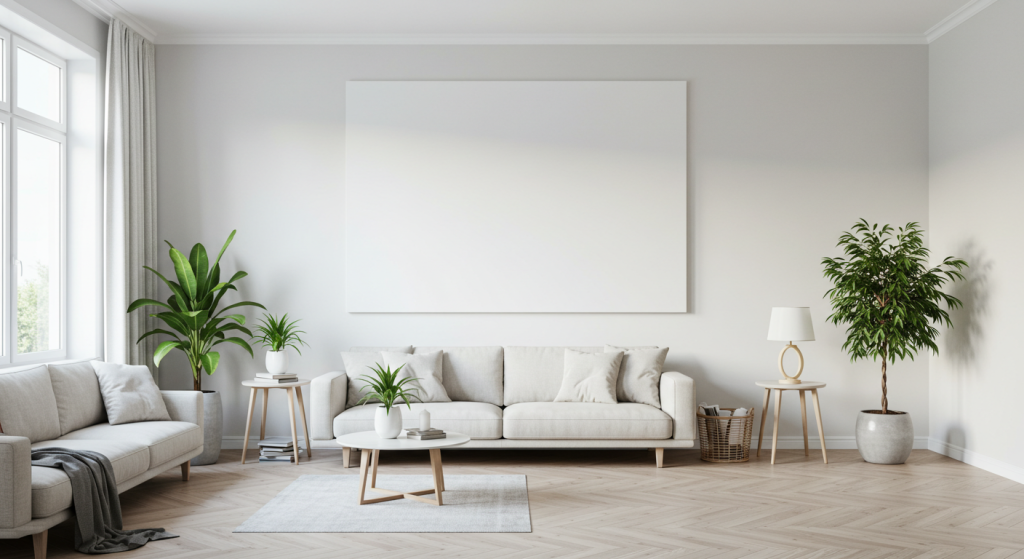
In my own journey toward minimalism, I found myself removing art from walls rather than adding it – and surprisingly, the rooms felt more intentional and peaceful. Try this: remove everything from one wall in your living space and live with it bare for a week. Notice how it changes the feeling of the room. If you do decide to add something back, make it one meaningful piece rather than a cluster of smaller items.
Japanese design philosophy has long embraced the concept of “Ma” – the meaningful pause or gap between elements. This principle teaches that empty spaces aren’t lacking something but are complete in themselves. When you’re tempted to fill a space, ask yourself: “Does this area need something, or am I just uncomfortable with emptiness?” Often, the most sophisticated minimalist homes are those that confidently embrace blank walls and open surfaces.
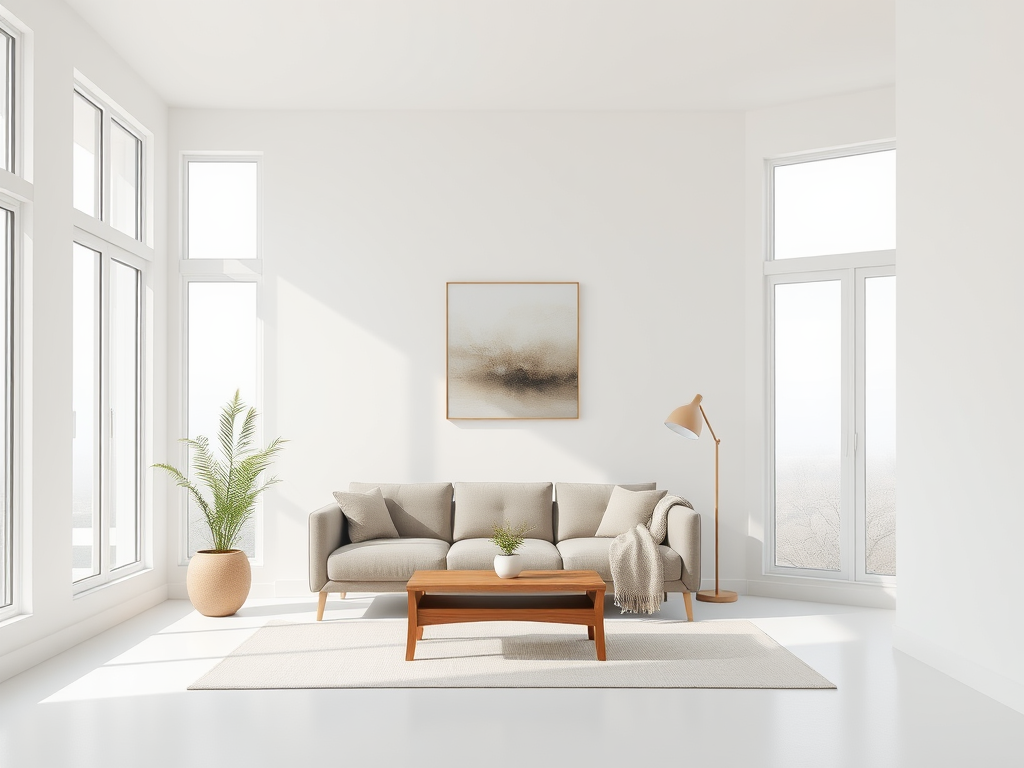
Implement Smart Storage Solutions
The reality of life is that we all have “stuff” – the difference in minimalist homes is that this stuff stays thoughtfully organized and mostly out of sight. Clever storage solutions are essential for maintaining the clean, uncluttered surfaces that define the minimalist aesthetic at home. When redesigning my bedroom, I invested in a platform bed with large drawers underneath, effectively eliminating the need for a bulky dresser and creating a more spacious feel.

Look for furniture that does double-duty as storage: coffee tables with drawers, ottomans with removable tops, sofas with under-seat storage, and beds with built-in compartments. Wall-mounted shelving can display a few select items while keeping floors clear. The key is creating homes for everything you own so that items don’t default to cluttering your surfaces.
Minimalist home organization techniques focus on accessibility without visual chaos. Consider the frequency with which you use items – daily necessities should be easily accessible, while seasonal or occasional items can be stored in less prominent places. Storage doesn’t need to be expensive either – simple canvas boxes, vintage baskets, or repurposed containers can create organizing systems that maintain your aesthetic while keeping clutter at bay.
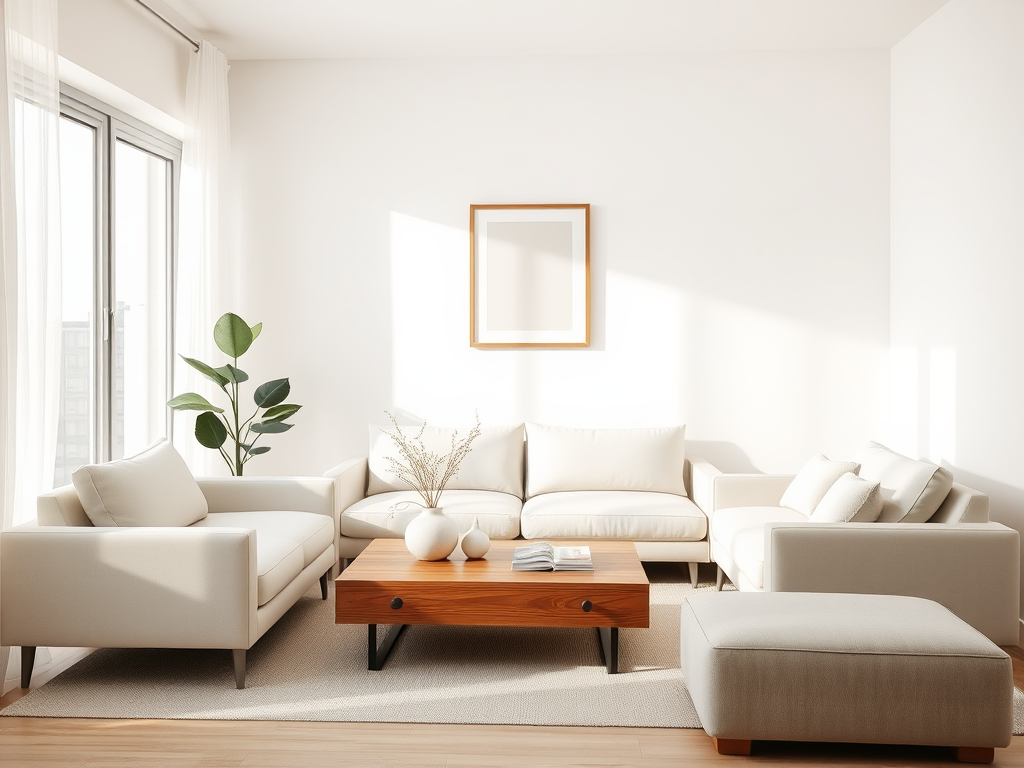
Add Warmth Through Natural Materials and Textures
A common misconception about minimalism is that it produces cold, uninviting spaces. The truth? Thoughtful incorporation of textures and natural materials creates minimalist rooms that feel incredibly warm and inviting. When I pared back my living room to just the essentials, I worried it might feel stark – until I added a chunky wool throw, a raw edge wooden coffee table, and a few linen pillows. Those simple textural elements transformed the space.
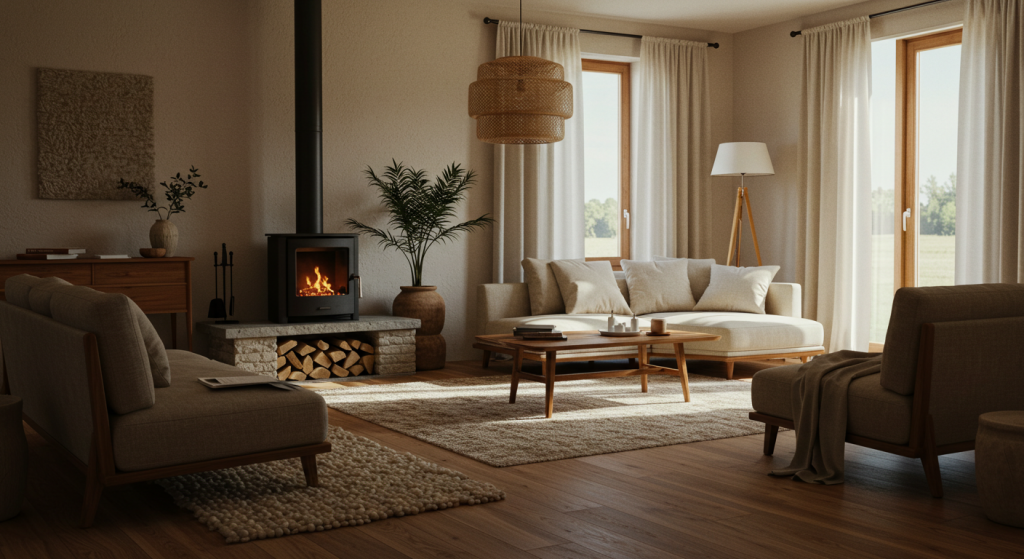
Natural materials bring inherent character and subtle variation that mass-produced synthetic items simply can’t replicate. Consider incorporating wood, stone, clay, wool, cotton, linen, or jute into your minimalist spaces. A wooden cutting board leaning against a kitchen backsplash, a stone vase on a shelf, or a simple linen table runner – these elements add depth without adding clutter.
The beauty of texture in minimalist design is that it creates interest without requiring additional objects. A textured white ceramic vase against a smooth white wall creates visual contrast despite sharing the same color. Try limiting your materials palette to three or four natural elements throughout a space for coherence. When these materials show subtle signs of age and patina, they only become more beautiful – aging gracefully just like well-designed minimalist spaces do.
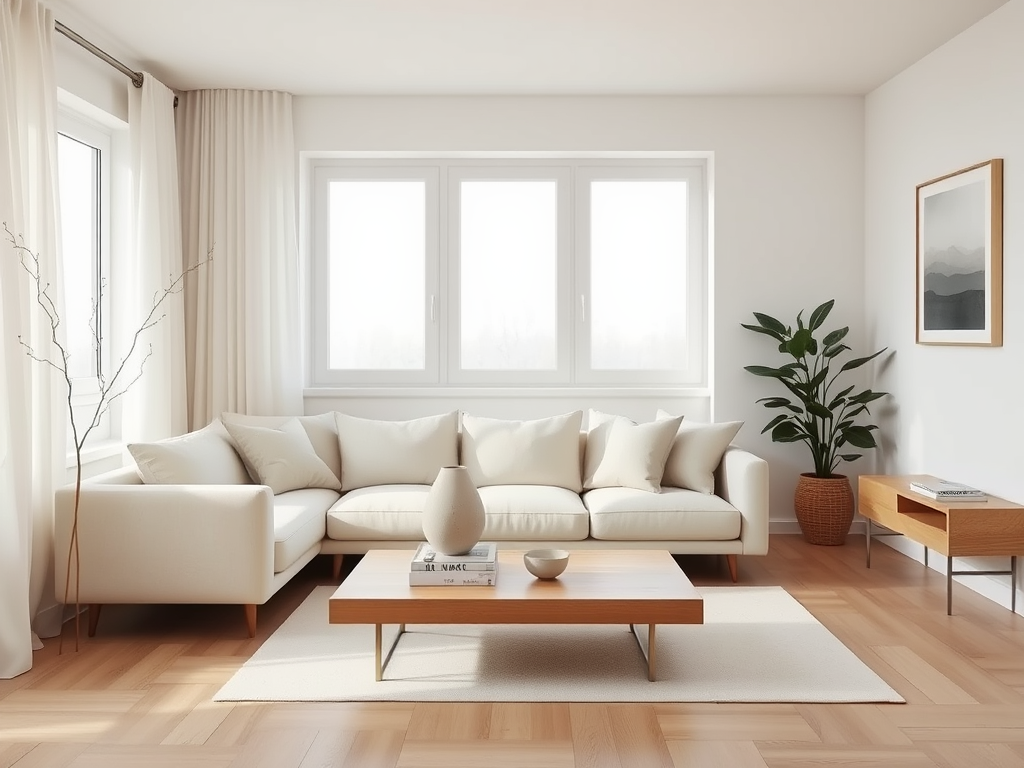
Edit Your Accessories to the Essentials
Accessories and décor items are where many minimalist intentions get derailed. It’s easy to accumulate small decorative objects that individually seem harmless but collectively create visual clutter. The minimalist aesthetic at home demands ruthless editing – keeping only those items that serve a purpose or bring genuine joy. My coffee table used to hold stacks of magazines, candles, and various knickknacks until I reduced it to just one beautiful art book and a simple clay vessel.
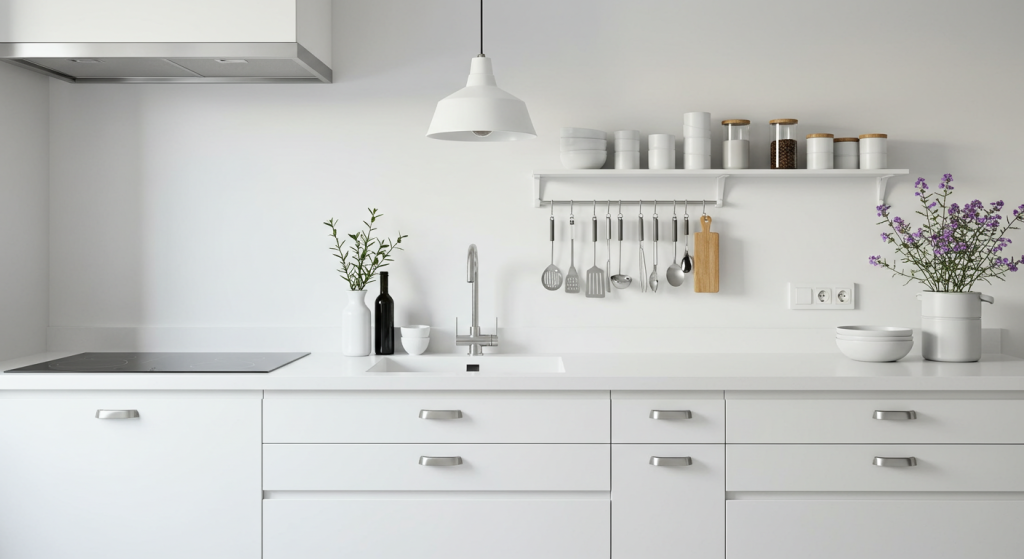
Consider implementing the “one in, one out” rule for accessories – when you bring something new home, something else must go. This prevents gradual accumulation and keeps your spaces feeling intentional. For items like books, vases, or decorative objects, try grouping them in odd numbers (threes work particularly well) rather than scattering them throughout a space.
Seasonal rotation is another helpful technique. Rather than displaying all your décor at once, keep a small collection of seasonal items stored away and swap them quarterly. This gives your space freshness without adding more things permanently. When selecting accessories, choose quality over quantity – one stunning handmade ceramic piece makes more impact than five mass-produced items. The minimalist goal isn’t to own nothing, but to own only what adds meaningful beauty to your everyday life.
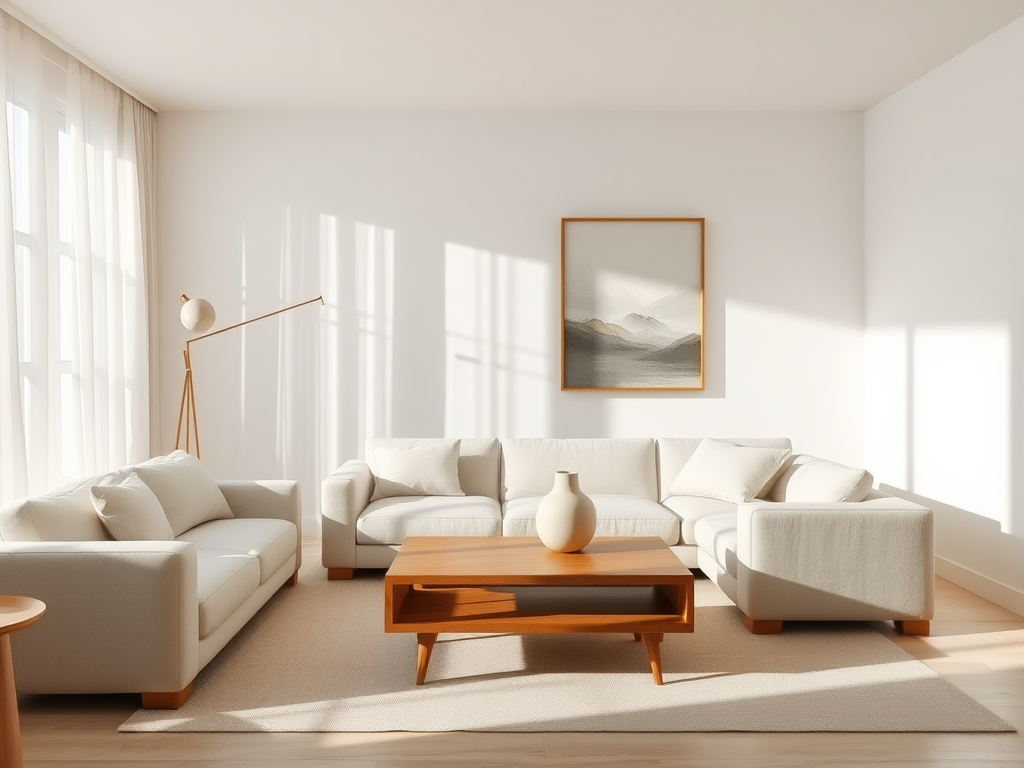
Design Around a Single Focal Point Per Room
When every element in a room competes for attention, the result feels chaotic rather than peaceful. The minimalist approach suggests creating one clear focal point in each space – an anchor that draws the eye while other elements play supporting roles. In my bedroom, a large, simple linen headboard serves as the focal point, allowing the rest of the furnishings to recede quietly into the background.
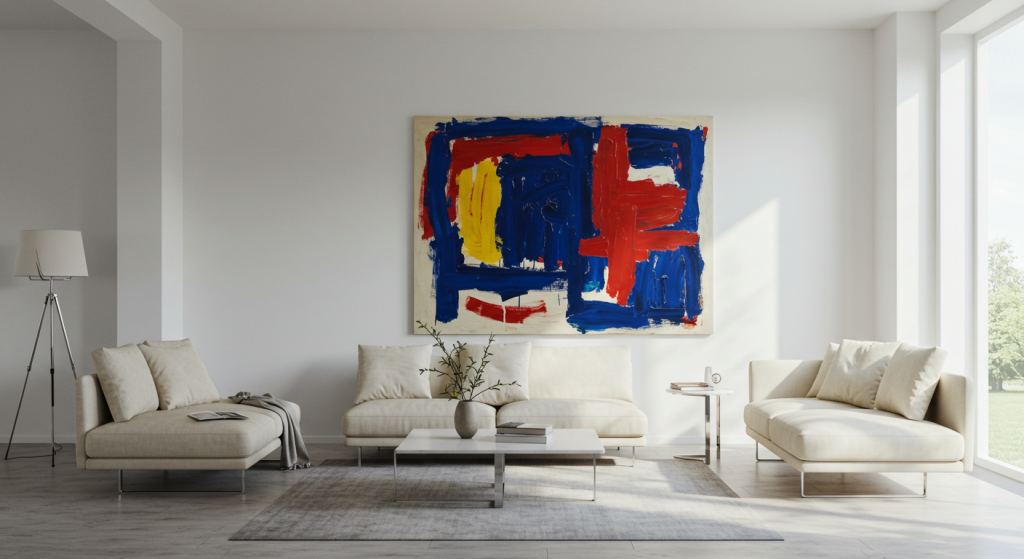
Choosing a focal point depends on your space and preferences. It might be an architectural feature like a fireplace or window, a piece of furniture like a distinctive dining table, or a single piece of meaningful art. Whatever you choose, let it guide your design decisions for the rest of the room. Furnishings, colors, and accessories should complement rather than compete with your focal point.
This single-focus approach prevents the visual overload that makes spaces feel cluttered and stressful. It also gives special meaning to your chosen focal element – perhaps a family heirloom or a special piece of art gets the attention it deserves rather than being lost among too many competing elements. Remember that in minimalist design, restraint often creates more impact than abundance.

Select Art and Décor with Personal Significance
Generic mass-produced artwork and décor rarely contribute positively to a minimalist aesthetic at home. Instead, focus on acquiring fewer pieces with genuine personal significance. When I downsized my apartment years ago, I found myself keeping just one painting – a small piece from a local artist I’d met while traveling. That single artwork brought me more joy than the dozen decorative store-bought pieces I had previously scattered around.
Abstract Line Art Canvas Print – Modern Wall Décor for Home, Office & Events
Personal significance doesn’t necessarily mean expensive. A framed photograph from a meaningful trip, a ceramic bowl made by a friend, a vintage item passed down through your family – these objects carry stories and emotions that generic décor simply cannot. When each piece has meaning, you naturally accumulate less because your standards become higher.
Consider how your décor choices reflect your authentic self rather than following trends or trying to create an “Instagram-worthy” space. Minimalism at its core is about honesty and intentionality – surrounding yourself only with items that reflect your true values and experiences. A thoughtfully curated home tells your unique story through carefully selected objects rather than speaking in the generic language of mass consumption.
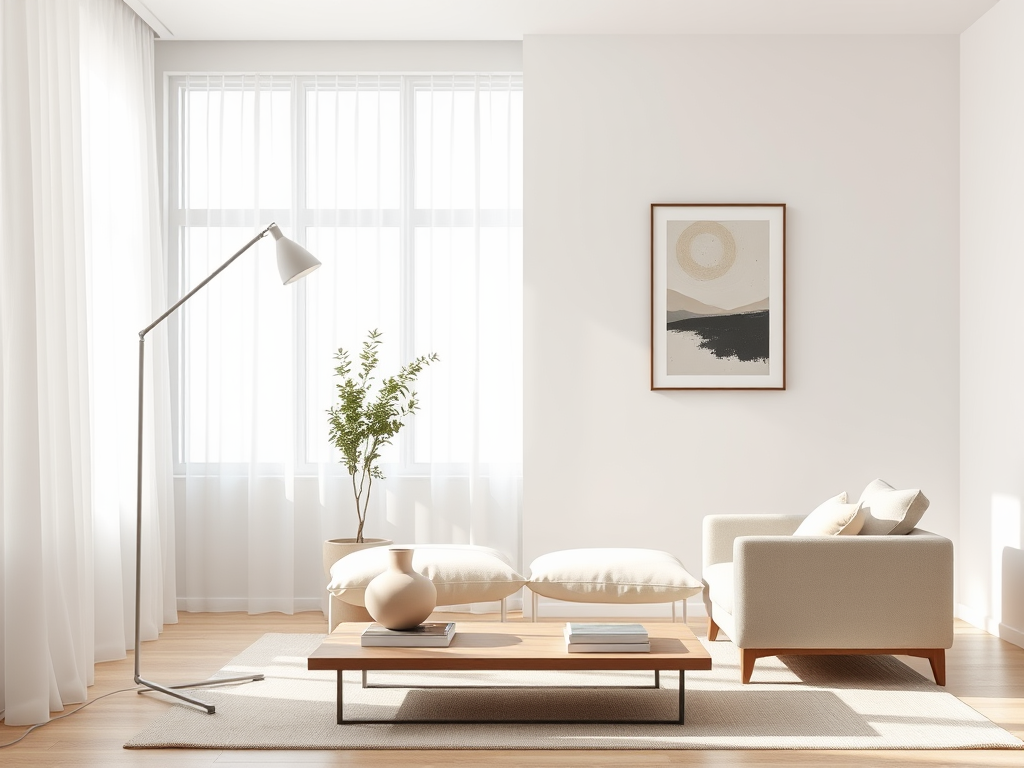
Develop Daily Habits That Maintain Minimalist Spaces
Even the most beautifully designed minimalist space requires consistent habits to maintain its peaceful quality. The minimalist aesthetic at home isn’t a one-time project but an ongoing practice of mindfulness about our spaces and possessions. I’ve found that establishing simple daily rituals makes maintaining minimalism almost effortless – like my “ten-minute reset” before bed where everything gets returned to its proper home.
Start with basic daily habits: making your bed immediately after waking, washing dishes right after use, hanging clothes or putting them in hampers rather than dropping them on chairs, and taking a few minutes each evening to clear surfaces. These small actions prevent the gradual build-up of clutter that can undermine your minimalist intentions.
The “one-touch rule” can be particularly effective – handle items only once by putting them directly where they belong rather than creating temporary landing spots. Another helpful practice is the regular “possession pause” – before bringing anything new home, pause and genuinely consider whether it aligns with your minimalist values and whether you have space for it physically and mentally.
Remember that minimalism isn’t about perfection but about creating systems and habits that support a more intentional life. When your home maintenance routines become second nature, you’ll find yourself enjoying the peace of your space rather than constantly struggling to control chaos.
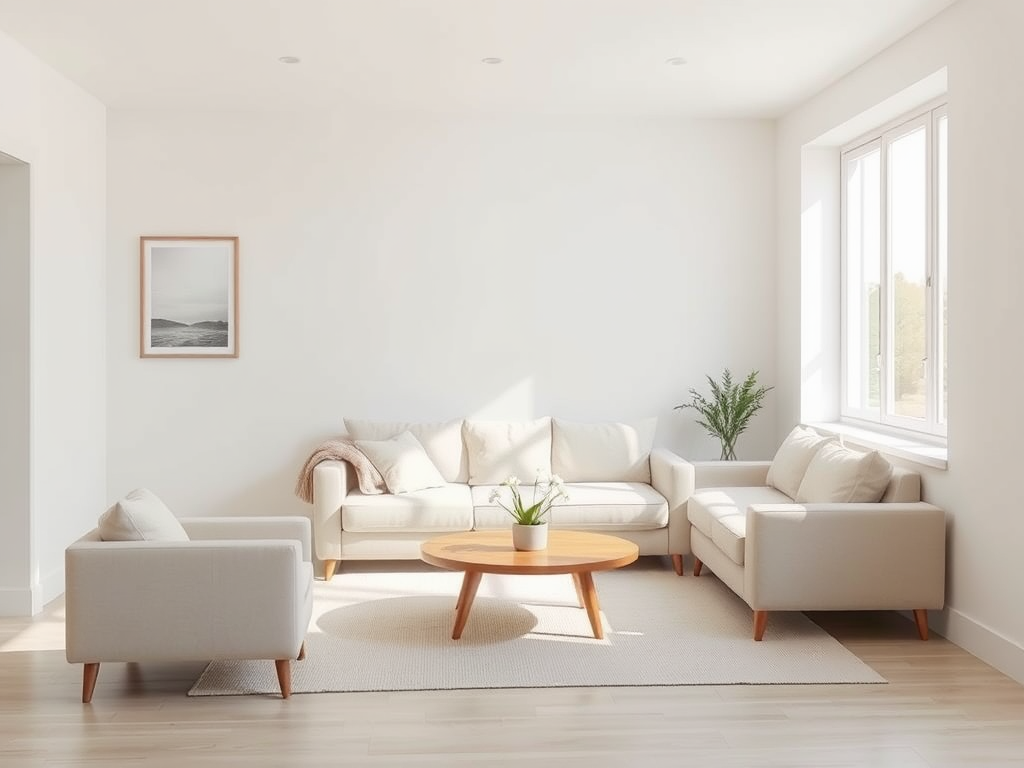
Finding Your Personal Minimalist Balance
The most successful minimalist homes reflect their owners’ unique personalities and priorities rather than adhering to rigid rules. Your version of the minimalist aesthetic at home might look quite different from someone else’s – and that’s exactly as it should be. Some might keep their book collection while minimizing elsewhere, while others might display a carefully curated collection of travel souvenirs.
The true purpose of minimalism isn’t achieving some perfect Instagram-worthy space but creating an environment that supports your wellbeing and values. My boyfriend initially resisted my minimalist tendencies until he realized I wasn’t asking him to get rid of his beloved vinyl collection – just to display it more thoughtfully on dedicated shelving that made it a feature rather than clutter.
Start by identifying what truly matters to you in your home environment. What activities bring you joy? What objects hold genuine meaning? Which spaces feel most peaceful to you, and why? Let these reflections guide your minimalist decisions rather than arbitrary rules about how many items you “should” own. Authentic minimalism feels liberating, not restrictive – like you’ve created more space for living rather than simply owning less.
The minimalist journey isn’t about reaching a final destination but about continuously refining your relationship with your possessions and spaces. Each small choice to simplify creates more room for what genuinely matters in your life – whether that’s family time, creative pursuits, or simply the mental space to breathe more easily. Your home becomes not just a showcase but a sanctuary that supports your unique version of a well-lived life.
Creating a minimalist aesthetic at home doesn’t happen overnight. It’s a gradual process of thoughtful editing, intentional habits, and discovering what “enough” truly means for you. Start with just one area or one principle from this list and notice how it affects both your space and your mindset. As you experience the clarity and calm that comes from simplified surroundings, you’ll likely find yourself naturally extending these principles throughout your home. Which of these minimalist approaches resonates most with you? The beauty of minimalism is that even small changes can create significant shifts in how your space feels and functions – giving you room to breathe, create, and fully enjoy the home you’ve mindfully crafted.





